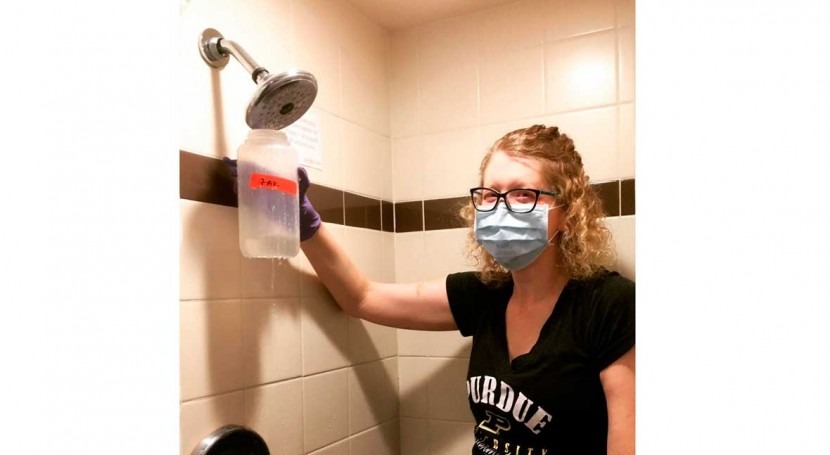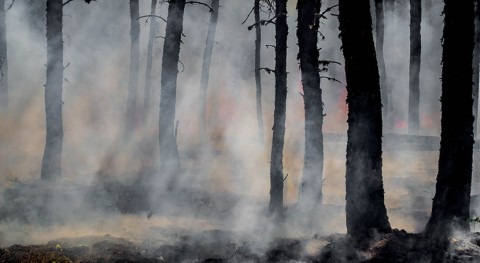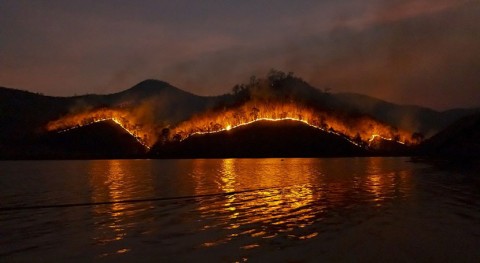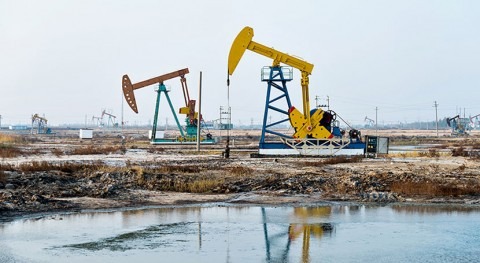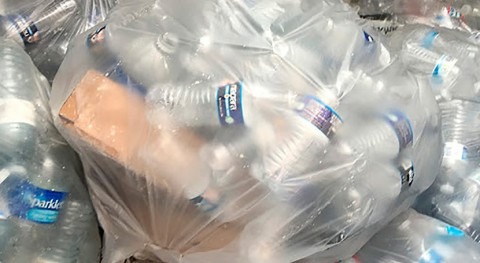Purdue University researchers Andrew J. Whelton, Associate Professor of Civil Engineering and Environmental and Ecological Engineering, and Caitlin R. Proctor, Postdoctoral Researcher, are working on a field study on the impact of a pandemic shutdown on buildings and stagnant water.
Amid the current health crisis, many countries and states have gone into lockdown, forcing many businesses to close down their activities, including schools, universities, restaurants and gyms. During this period, which in many cases exceeds weeks and months, bacteria can grow in plumbing systems, affecting the water quality. Likewise, many buildings that have been closed for years or were never officially opened, are now accommodating a potential influx of COVID-19 patients.
We speak to these two experts to learn a bit more about their study and their recommendations on stagnant water in buildings during these unprecedented times.
Question: Purdue University is monitoring water quality in buildings both during a period of extended vacancy and when occupants have returned. Where is the Purdue University carrying out this research?
Proctor: We are investigating a few buildings in West Lafayette
Q: Normally, buildings can prevent stagnation through regular water use, but extended building shutdowns require different solutions. Could you give us some examples of the best solutions for these cases?
Whelton: For buildings that have not had stagnant water in them, flush all water outlets at least once a week, but more frequent is better. Multiple times per week would be better.
Proctor:
- Flushing – completely overturning the water of a building to replace old water (with issues) with new fresh water
- Shock-disinfection – A high level of disinfectant can be added to plumbing to kill everything inside. A hot water shock (i.e., 70°C water flush) can also be used.
- Testing – to confirm delivery of disinfectant residual to the taps, or to confirm low levels of particular bacteria and/or metals.
- Personal Protective Equipment (PPE) – Masks (which are in short supply right now) might be necessary to protect workers performing flushing.
Q: In some areas of France, drinking water suppliers have increased the dose of chlorine in the water distribution networks to tackle stagnant water during the Covid-19 pandemic. Have any parts of the U.S. taken any measures in this respect? And if so, which ones?
Whelton: This was done in the U.K. too. Typically, water providers in those countries have lower disinfectant residual levels than in the U.S. We are not aware of any U.S. utilities that are increasing their disinfectant residual levels at this time.
Proctor: We are not aware of such measures. Of note, low-water-use will only affect some districts, since residential areas likely have higher than normal use right now. Cities like Baltimore Inner Harbor, Washington DC (which have more work-places than residences) might be harder hit than cities with an even mix of residential and commercial areas.
We are not aware of any U.S. utilities that are increasing their disinfectant residual levels at this time - Andrew J. Whelton
Q: Old hospital buildings that have been reopened to accommodate a potential influx of Covid-19 patients could suffer from stagnant water. What recommendations would you give in these cases?
Whelton: These facilities must be handled with extreme care, especially if they are to house weakened immune system, neonates, or the critically ill. The state and local health departments must be closely involved in any decisions and actions that involved a building like this.
Proctor: Medical facilities are required to have “building water management plans” that address concerns such as stagnant water, lower than necessary hot water temperatures, and improper hydraulic balancing as risks for growth. So, we hope that managers of these buildings are aware of potential issues.
Reopening plumbing would likely take all of the actions we described above. Hospital patients are particularly vulnerable to disease caused by harmful organisms that grow in building water systems (Legionella pneumophila, non-tuberculous Mycobacterium, Pseudomonas aeruginosa). Multiple measures to eliminate previous growth and prevent further growth should be taken.
After reopening, these buildings should be adhering to best practices suggested for building water management plans - Caitlin R. Proctor
After reopening, these buildings should be adhering to best practices suggested for building water management plans. This means keeping the hot water hot, the cold water cold, and keeping water moving through the system. This may be particularly tricky in buildings that are not designed as medical facilities (e.g., converted stadiums). Alternative water (e.g., bottled water, additional on-site treatment) can always be used for patients and medical staff in contact with patients.
It should be noted that all water activities (hand-washing, showering) are risks for exposure to these organisms, as inhalation and dermal exposures cause infection.
Q: Purdue University is also tracking the Legionella pneumophila pathogen in stagnant water. Could you tell us a bit more about this pathogen?
Proctor: Legionella pneumophila is one of many bacterial pathogens known to grow in building water systems. It receives the most attention as it is linked to reportable diseases.
The growth conditions of L. pneumophila are being continually uncovered, but stagnant conditions are generally thought to encourage its growth. The loss of disinfectant residual in cold water pipes and the loss of high temperatures in stagnant distal hot water pipes are both risks. It likes warm temperatures, so improperly maintained hot water systems (e.g., recirculation loops with temperature loss during stagnation) are at high risk.
It causes respiratory disease. Legionnaires’ Disease presents as a bacterial pneumonia. This disease typically affects immunocompromised people (the elderly, those with underlying conditions, and hospital patients). A milder form of the disease, known as Pontiac Fever is also possible. [Side note – this bacterial pneumonia works differently than a viral pneumonia, and would present differently with diagnostic tests or X-ray, but it could have some similar symptoms to COVID-19].
Q: What other organizations and universities are collaborating with Purdue University on this study?
Whelton: ASPE, IAPMO, NEHA, ASTHO. We have also helped the AWWA and private consulting firm with their advice being given to a non-profit organisation. We worked on a new study with University and private sector organizations. A full link of their affiliations can be found here: https://engineering.purdue.edu/PlumbingSafety/covid19/building-water-safety-study. We have also helped several state health departments and state drinking water primacy agencies.
Proctor: We completed a rapid review on the topic with several of our colleagues to get the word out quickly about these issues. Our colleagues from Virginia Tech, University of Memphis, Arizona State University, Northeastern University, University of Iowa, Polytechnique Montreal, and Legionella Risk Management, Inc. were instrumental in getting something out so quickly. (https://www.doi.org/10.31219/osf.io/qvj3b) This study is currently out as a preprint while it undergoes peer-review.
We are making other efforts independently.
Q: When do you hope to have the findings of the study available?
Whelton: Results are already available, and more would be made publicly available in the coming days to months.
- We have created and posting flushing plans for buildings (office and school) here: https://engineering.purdue.edu/PlumbingSafety/resources/flushing-plans
- We have created brief public videos about building water safety topics here:
We will be posting more soon.
These are at the Plumbing Safety YouTube Channel.
- Results of a new study with some of our collaborators can be found here: https://engineering.purdue.edu/PlumbingSafety/covid19/building-water-safety-study
- A FAQ list for this study can be found here: https://engineering.purdue.edu/PlumbingSafety/covid19/faq-building-water-safety
- We are processing cold and hot water samples that we collected. We are continuing to conduct water sampling in commercial and multi-family residential buildings.
- We are purchasing devices such as water heaters and water softeners to setup tests to determine how to safely return them to service after prolonged stagnation.
Proctor: There are several aspects of the study. Some of our products are currently rolling out in order to inspire action in buildings now, before society returns to stagnant buildings.
We already also put out several “flushing plans” [see below] for buildings we work in. These are meant to show the complexity and variety of buildings, and the thought which must go into a flushing plan. We also put out several videos directed to a more general audience about the problems and the flushing process, and we released the review paper described above.
As for results of the water samples we are taking to investigate water quality changes during stagnation and effectiveness of flushing plans – these results will come out later, when we are able to fully analyse water samples and make a comparison to “normal conditions”. Not all laboratory facilities are currently available. We hope to publish initial results in late 2020 or early 2021. Some results may be released in preprint before this.


